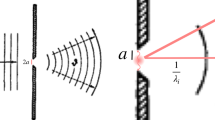Abstract
The reconcilability of gravitational with electromagnetic clocks suggests that a rigorous analysis of time will provide understanding of the unity of gravity and electromagnetism. Time is found to be fundamentally a property of elementary particles, only derivatively a property of clocks. A declaration is made: that the flow of an elementary particle's timeis the change of its radius, that time is therefore illusory. The de Sitter expanding universe is derived from this principle by treating elementary particles as spheres in Euclidean space. The hyperspheres of de Sitter space call up a five-dimensional metric manifold whose geometry models gravity, electromagnetism, and other phenomena tied to the structure of matter; neutrinos are provided for. Distance in this manifold is related to a secondary time, not correlated to primary time, but just as illusory. A particle's inertial rest mass is the relative rate of its two proper times; mass and charge are jointly, not individually, conserved.
Similar content being viewed by others
References
A. Mercier, Thoughts on the dynamics of foundations, or what I believe,Found. Phys. 1, 285 (1971).
M. D. Kruskal, Maximal extension of Schwarzschild metric,Phys. Rev. 119, 1743 (1960).
C. Fronsdal, Completion and embedding of the Schwarzschild solution,Phys. Rev. 116, 778 (1959).
J. C. Graves and D. R. Brill, Oscillatory character of Reissner-Nordström metric for an ideal charged wormhole,Phys. Rev. 120, 1507 (1960).
H. G. Ellis, Ether flow through a drainhole: a particle model in general relativity,J. Math. Phys. 14, 104 (1973).
E. Schrödinger,Expanding Universes (Cambridge University Press, Cambridge, 1956), p. 33.
H. Minkowski, Raum und Zeit, inGesammelte Abhandlungen von Hermann Minkowski (Teubner, Leipzig, 1911), p. 431; translated as Space and time, inThe Principle of Relativity (Dover, New York, 1923), p. 73.
E. Cunningham, The principle of relativity in electrodynamics and an extension thereof,Proc. London Math. Soc. 8, 77 (1910).
H. Bateman, The transformation of the electrodynamical equations,Proc. London Math. Soc. 8, 223 (1910).
Y. Aharonov and D. Bohm, Significance of electromagnetic potentials in the quantum theory,Phys. Rev. 115, 485 (1959).
W. Ehrenberg and R. E. Siday, The refractive index in electron optics and the principles of dynamics,Proc. Phys. Soc. (London)B62, 8 (1949).
Author information
Authors and Affiliations
Rights and permissions
About this article
Cite this article
Ellis, H.G. Time, the grand illusion. Found Phys 4, 311–319 (1974). https://doi.org/10.1007/BF00712694
Received:
Issue Date:
DOI: https://doi.org/10.1007/BF00712694




